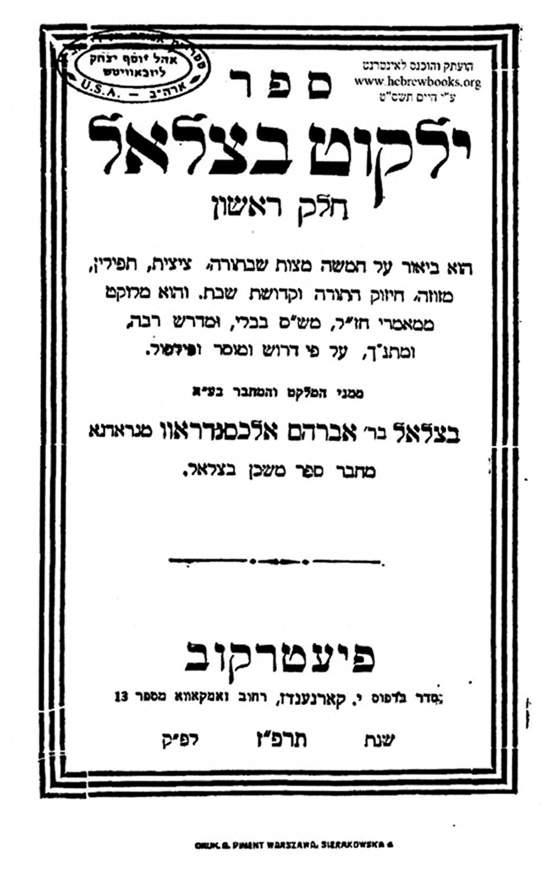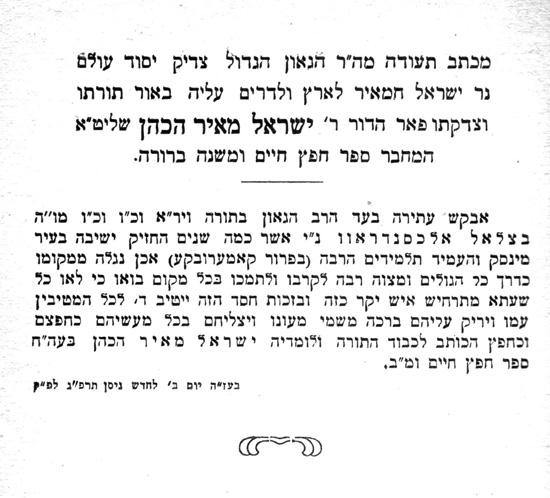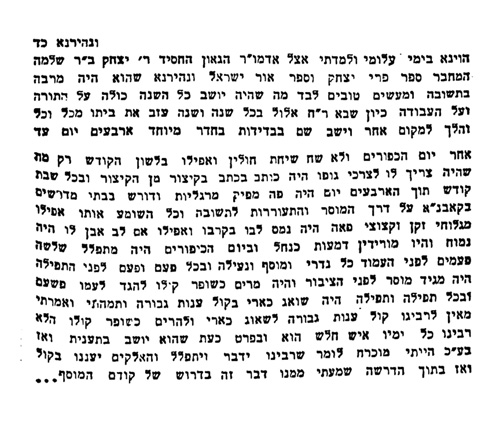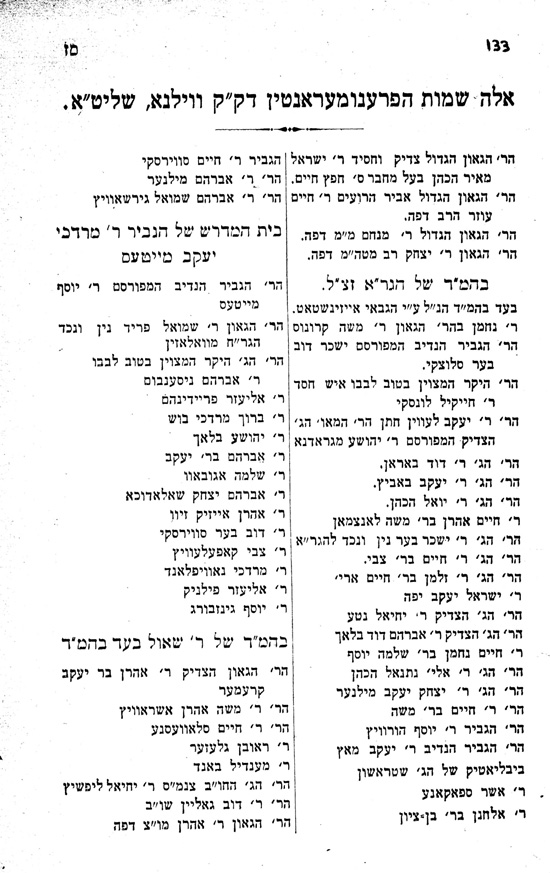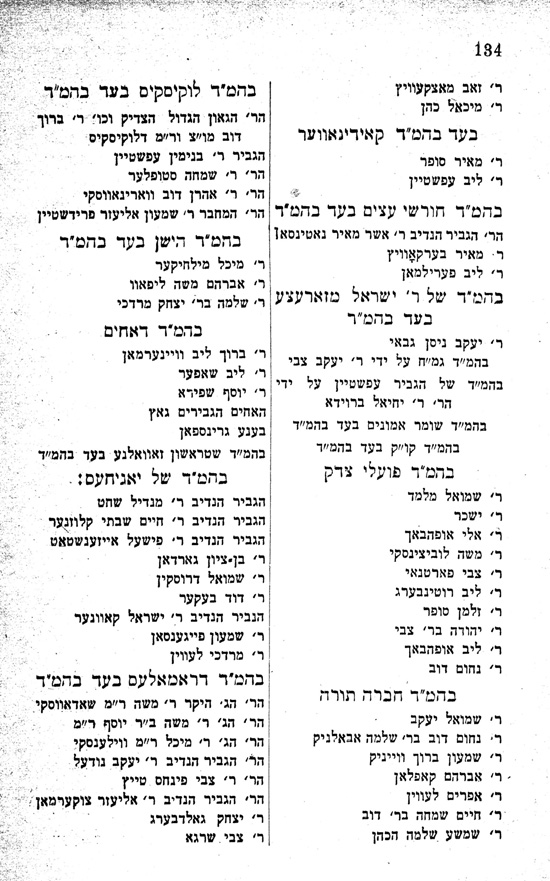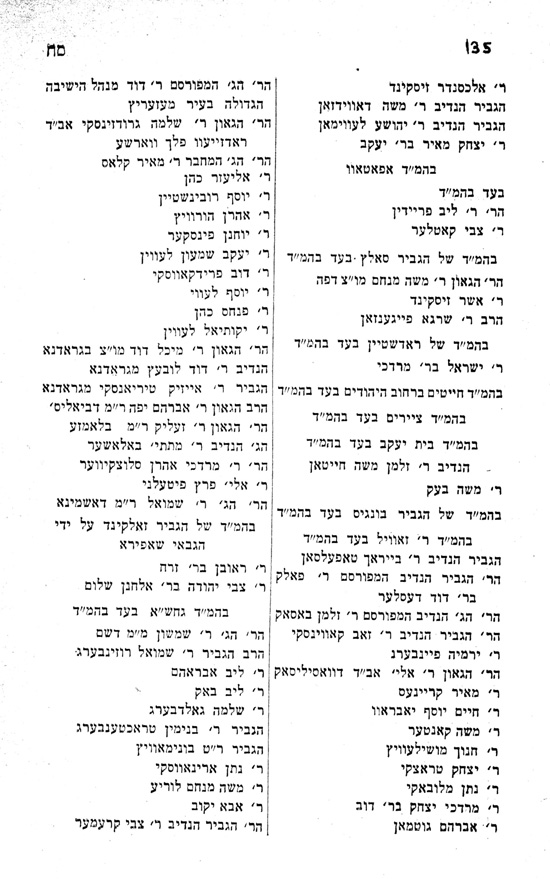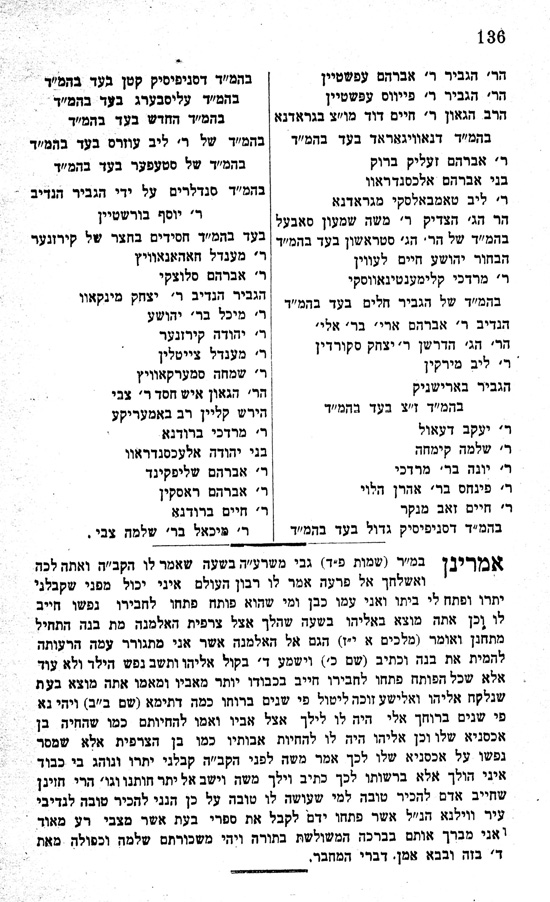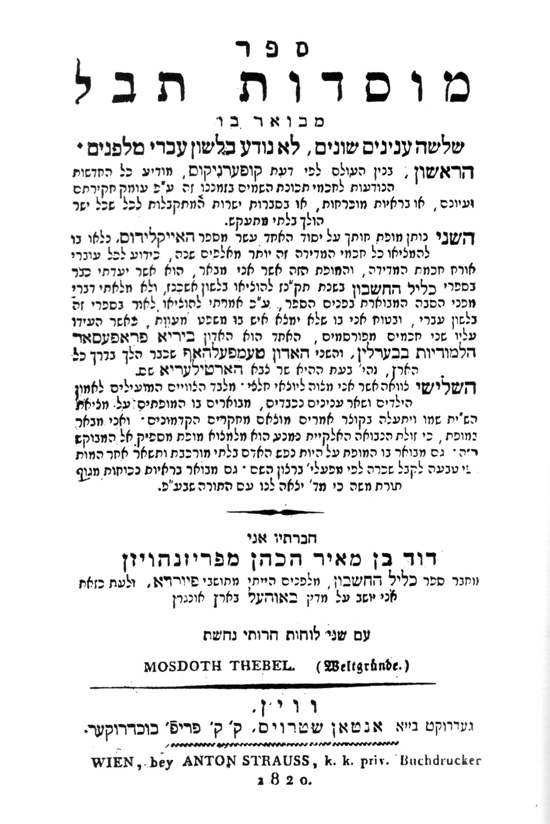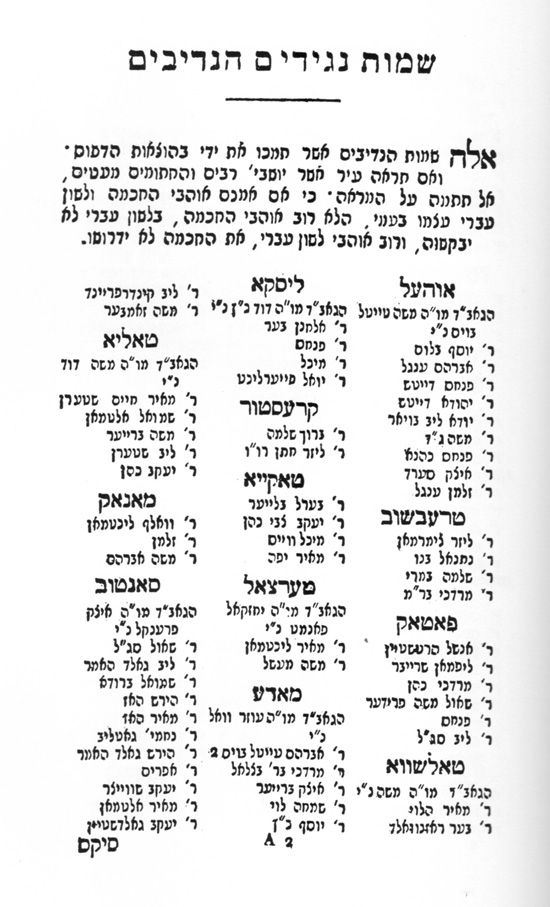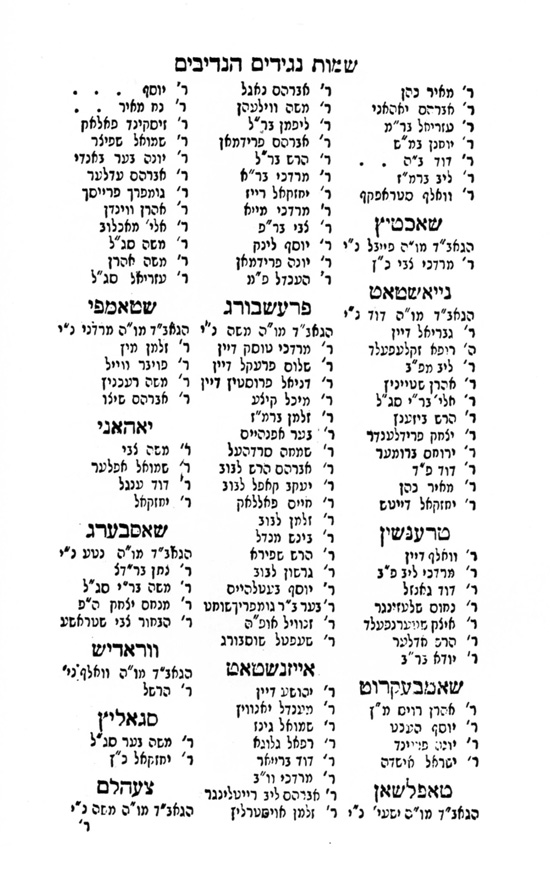Translations of
Rabbi Judah Halevi’s Kuzari
by Daniel J. Lasker
Daniel J. Lasker is Norbert Blechner Professor of Jewish Values at Ben-Gurion University of the Negev, Beer Sheva, in the Goldstein-Goren Department of Jewish Thought. He has published widely in the fields of medieval Jewish philosophy, the Jewish-Christian debate, and Karaism.
This is Professor Lasker’s third essay at the Seforim
blog.
On the occasion
of the publication of:
ספר הכוזרי. הוא ספר הטענה והראָיה לדת
המושפלת לרבי יהודה הלוי
תרגם מערבית-יהודית לעברית בת זמננו
מיכאל שוַרץ
הוצאת הספרים של אוניברסיטת בן-גוריון
בנגב, באר-שבע, תשע”ז
R. Judah Halevi,
The Book of Kuzari. The Book of Rejoinder and Proof of the Despised Religion,
translated by Michael Schwarz
Beer Sheva, 2017
The
publication of Prof. Michael Schwarz z”l’s new modern Hebrew translation of
Rabbi Judah Halevi’s Judaeo-Arabic Book of Kuzari provides a good
opportunity to discuss previous versions of this seminal book of Jewish thought
and to evaluate the advantages that Prof. Schwarz’s translation has over other
renditions. Prof. Schwarz (1929-2011), who completed a draft translation before
he died over five years ago, was a scholar of Jewish and Islamic philosophy
whose best-known publication has been his translation of Maimonides’ Guide
of the Perplexed. After an unfortunate delay, the Kuzari has now been
published by the International Goldstein-Goren Center for Jewish Thought at
Ben-Gurion University of the Negev, in its series “Library of Jewish Thought,”
under the editorship of Prof. Haim Kreisel.[1]
Less
than thirty years after R. Judah ben Samuel Halevi completed his
Book of
Kuzari[2] in approximately
1140, it became one of the first Judaeo-Arabic compositions to be translated
into Hebrew. This pioneering translation marked part of the cultural transfer
of Andalusian Jewish culture, written in Judaeo-Arabic, into Hebrew, and was accomplished
in 1167 by R. Judah ben Saul Ibn Tibbon, “the father of the translators.” As
the centers of Jewish intellectual life moved to Christian areas where Hebrew
was the predominant Jewish literary language, it was only through this
translation that the
Kuzari was known to generations upon generations of
Jews. The
Kuzari’s readers were moved by its unwavering defense of
Judaism, its description of Jewish singular chosenness, and its love of Zion.
Halevi’s life story, including his departure from Iberia and, according to
legend, his martyrdom at the gates of Jerusalem, only strengthened the
resonance of the book (on this legend, see
here). Extensive commentaries were written on the basis of the
Ibn Tibbon translation by authors who neither understand Arabic nor were able
to appreciate the Islamic context in which the
Kuzari was written. Judah
Halevi’s defense of Judaism made a great impact on Jewish thought and achieved
canonical status.[3]
With
the birth of Jewish studies in the nineteenth century, scholars began
publishing original texts in academic editions. Thus, Hartwig Hirschfeld
(1854-1934), working with Oxford-Bodleian Ms. Pococke 284, the only complete,
or almost complete, version of the work, produced a first edition of the
original Judaeo-Arabic text of the Kuzari.[4] He published with it a
version of the Ibn Tibbon translation which was partially corrected to
correspond to the Judaeo-Arabic version, but not in a consistent manner. Thus,
Hirschfeld changed some passages in the Hebrew despite their being attested in
all the Ibn Tibbon manuscripts and editions, but left other problematic
passages untouched.[5] The Hirschfeld Ibn Tibbon text achieved wide
distribution when it was used by Avraham Zifroni as the basis of his edition of
the Kuzari, and many contemporary editions of the Hebrew Kuzari
are based on Zifroni’s work.[6] Meanwhile, Hirschfeld’s Judaeo-Arabic publication
has been supplanted by the superior edition of David Zvi Baneth and Haggai
Ben-Shammai.[7]
The
Judah Ibn Tibbon translation of the Kuzari is an adequate translation, despite
some misunderstandings. It follows the Tibbonide practice of maintaining the
syntax and word order of the original Arabic to the extent possible and often
translating the same underlying Arabic term with one Hebrew equivalent. It may also
be a better witness to the original text of the Kuzari than the unique Judaeo-Arabic
manuscript which was copied in Damascus over 300 years after the composition of
the original book. For professional students of medieval Jewish philosophy, or
those with close familiarity with medieval Hebrew, it is readable and achieves
its goal of making the work accessible to non-Arabic readers. Yet, there is
still no acceptable edition based on the best manuscripts of this translation.
In addition, as a means of communicating the extent of Judah Halevi’s thought
to the contemporary reader of modern Hebrew, it is less than ideal. Thus, since
the 1970’s, a number of new Hebrew translations of the Kuzari have
appeared.
The
first of these translations was presented by Dr. Yehudah Even Shmuel (1886-1976)
in 1973.[8] The first edition included a long introduction, a vocalized and
punctuated text, short notes and many extensive indices, and was praised for
the clarity of its Hebrew and its accessibility to contemporary readers.
Subsequently it was published in paperback with just the text and short notes,
an edition which has sold well and is used as a textbook for high schools and
universities. At first, the novelty of a medieval philosophical work in
readable modern Hebrew seems to have compensated for the imprecision of the
translation.[9] Oftentimes, the translator offered more of a creative
paraphrase than an exact translation, and there were sections where Even Shmuel
attempted to tone down considerably Judah Halevi’s view of Jewish essentialism.[10]
Many key terms were translated by different Hebrew words, making it impossible
for the reader to note the importance of these words, most of which have
resonances from the Islamic and Arabic realms. Thus, Halevi’s great debt to his
non-Jewish cultural context was effectively hidden by this translation.
Scholars soon realized that this edition of the Kuzari could not be used
for academic purposes.
Despite
its drawbacks, or perhaps because of its advantages, the Even Shmuel
translation went unchallenged for over 20 years. In the mid-1990’s, I heard
Rabbi Yosef Kafiḥ (1917-2000), the well-known editor and translator of
Judaeo-Arabic texts, reply to a question as to why he did not translate the Kuzari
as he had translated so many other classics. He responded that he had prepared
such a translation many years previously but had decided not to publish it
because he did not want to appear as competing with Even Shmuel. Nonetheless, Kafiḥ
finally did publish his own translation in 1997,[11] following his custom of
presenting the original Judaeo-Arabic and the Hebrew translation in parallel
columns.[12] This translation has neither the clarity nor the extensive
notation of Kafiḥ’s earlier translations; most of his comments are devoted to
attacking Even Shmuel’s translation. In his introduction, Kafiḥ explains that
he had begun translating the Kuzari when he was a student in a class led
by Rabbi David Cohen (the Nazir, 1887-1972) at Merkaz Harav Yeshiva in 1947-48,
where he was made responsible for comparing Ibn Tibbon’s Hebrew with the
Judaeo-Arabic in the Hirschfeld edition.[13] Repeating what he had said in
public, namely that he had waited so long to publish this translation because
of his desire not to appear as a competitor with Even Shmuel, he then goes on
to attack Even Shmuel’s translation mercilessly. He even states that Rabbi
Judah Halevi composed one of his dirges when he realized that his Kuzari
would be translated by Even Shmuel.
Despite
Rabbi Kafiḥ’s great erudition in Judaeo-Arabic, and the general readability of
his other translations, the Kuzari does not match his previous work.
Whether this was a result of the fact that the translation was, indeed, a
product of his youth before he had perfected his Hebrew style, or was the work
of an aged man who did not review his earlier drafts, it did not succeed in replacing
the Even Shmuel translation as the generally accepted Hebrew version of the Kuzari.
My own experience with Israeli students has been that Kafiḥ’s Hebrew is not
much more understandable than that of Judah Ibn Tibbon, and, despite the
convenience of having the original Judaeo-Arabic text available, it was not a
very good pedagogical tool. Sometimes I preferred using the Ibn Tibbon text
which is available in a number of formats, such as in Yediot Aharonot’s Am
ha-sefer project[14] and on-line.
There
exists one more contemporary translation of the Kuzari into Hebrew and
that is the one produced by Rabbi Itzhak Shailat (b. 1946).[15] Shailat is
known for his editions and translations of medieval Judaeo-Arabic texts, such
as Maimonides’ Epistles. Although Shailat’s introduction and notes to
his editions demonstrate a conservative, harmonistic and pietistic approach to
his authors, his translations are generally accurate. His methodology, however,
is to reproduce Tibbonide Hebrew as much as possible, giving his translations a
classical, rather than modern, feel. Hence, his Kuzari should be seen as
an update of Ibn Tibbon rather than as an independent creation.
Before
discussing the new Hebrew translation, it might be useful to refer to
translations into other languages. In addition to editing the Judaeo-Arabic
text of the Kuzari, and producing an edition of Ibn Tibbon’s Hebrew
translation, Hartwig Hirschfeld also translated the book into English.[16] This
work was reissued many times, often with minimal attribution to Hirschfeld.[17]
The abridged translation of the Kuzari by Prof. Isaac Heinemann
(1876-1957) which appeared independently in Oxford, 1947, and was later
incorporated in the widely distributed Three Jewish Philosophers,[18] is
greatly dependent upon Hirschfeld. In addition to questions of accuracy, the
language of these translations is difficult for the contemporary English
reader.
In
an attempt to present a clearly written English version of the Kuzari
which could be used by laypeople, Rabbi N. Daniel Korobkin (b. 1964) published
a translation on the basis of the Ibn Tibbon version, relying on the
interpretations of the classical commentators Judah Moscatto and Israel of
Zamosc.[19] Although achieving its goal of readability, the author’s ignorance
of Arabic and the scholarly literature on the Kuzari are the cause of
multiple errors of translation and annotation. Ibn Tibbon’s Hebrew translation
of the Kuzari is included in the book, but since it is based on the
Hirschfeld/Zifroni edition (the exact source is not noted in the book), and the
English translation is based on older editions, there are inconsistencies
between the Hebrew and the English. Subsequent to the Korobkin translation, other
English editions of the Kuzari have appeared, but apparently none of them
is based on the Judaeo-Arabic original.[20]
A
scholarly, readable English translation of the Kuzari from the original
has long been a desideratum. In fact, Prof. Lawrence V. Berman (1929-1988)
began the work on such a translation before his untimely death. The project was
inherited by Prof. Barry S. Kogan (b. 1944) and is scheduled to appear as part
of the Yale Judaica Series. This project has been long delayed, but Prof. Kogan
has been very generous with sharing drafts of this translation with colleagues,
a number of whom have used its clear and accurate renditions in their own
publications. One can only hope that there will not be much further delay until
the translation appears in print.[21]
This
leads us to the recently published Hebrew translation of the Kuzari by
Prof. Michael Schwarz. Following the pattern established in his translation of
Maimonides’ Guide, Schwarz presents an eminently readable rendition of
the book. As in the case of his other translations, the work combines accuracy
with readability. His language is elegant, eschewing the many foreign words
which have entered contemporary Hebrew. He highlights words which appear in
Hebrew in the Judaeo-Arabic original by using a bold font so the reader knows
that this is Halevi’s Hebrew, not Schwarz’s.
As
noted above, one of the challenges with a translation of the Kuzari is
how to capture the Islamic/Arabic flavor of the work. Despite its reputation as
the most Jewish of the medieval Jewish philosophical treatises, recent research
has demonstrated the extent to which the Kuzari is steeped in Islamic concepts.[22]
This can be seen by its use of a number of key terms which are repeated
throughout the book, such as ṣafwa (the choicest, translated as segulah,
as found in other translations, despite Prof. Schwarz’s reservations); al-amr
al-ilāhī (divine order, translated ha-davar ha-‘elohi, as per Kafiḥ,
in contrast to Ibn Tibbon’s ha-ʿinyan ha-‘elohi); ijtihād (fervent
striving or innovating new laws, translated as hit’amẓut, hishtadlut, or ḥiddush
halakhah), or qiyās (analogous reasoning or general rationalism,
translated heqesh or higgayon). Since it is not always possible
to use the exact same translation in every context, the translator must find a
way of informing the reader of the underlying key term. Schwarz solves this
problem by drawing up a list of recurring Arabic concepts and noting each time
one of them is used. He then explains these terms in a special glossary devoted
to their explication. Some important Arabic words which are used less often are
explained in the textual notes. In addition, the notes provide references to
Halevi’s sources or further explications.
Scholarly
analyses of the Kuzari are extensive, and as in the case of Schwarz’s
translation of the Guide, the notes are full of references to this
secondary literature. Although he does not say so in his very short preface,
one can assume that as was the case in the Guide, the reference to a
particular article or book does not necessarily imply endorsement of the
material found therein. The annotations are there for comprehensiveness, and
the alert reader is enjoined to examine them carefully. The bibliography
occupies 36 pages. In addition, there are indices of sources and a general
index of topics and places.[23]
When
Part One of Prof. Michael Schwarz’s translation of the Guide was first published
by Tel-Aviv University Press in 1997, I offered the opinion that despite the
fact that it was the best available Hebrew version of Maimonides’ masterpiece,
I was not sure it would replace the other available translations, partially
since traditional Jewish readers might be wary of a university provenance and
the reliance on non-Jewish sources.[24] I believe that my estimation has been
proven wrong, since the translation’s clear superiority to the competition has
made it indispensible.[25] It is to be hoped that the same widespread
acceptance of the Schwarz translation of the Guide will be repeated in
the case of the Schwarz translation of the Kuzari, since it is, without
doubt, the best Hebrew Kuzari available.
Notes:
[1]
Books from this series are produced by the Mosad Bialik Publishing House. The
Schwarz
Kuzari can be ordered
here.
The translation is preceded by an introduction which Prof. Schwarz asked me to
write and which he approved a few weeks before his death. [Editor’s Note:
Professor Schwarz’ edition of the Kuzari can be purchased via Bialik or by
contacting (
Eliezerbrodt@gmail.com) — where the book will be available at the
same Book Week price. Portions of the proceeds of this sale help support the efforts of
the Seforim Blog.]
[2] The title, The
Book of Rejoinder and Proof of the Despised Religion, is in accordance with
a Geniza fragment; a slightly different title appears in the one full Judaeo-Arabic
manuscript mentioned below. The title of Ibn Tibbon’s translation, Sefer
ha-kuzari, was that which was known to centuries of Hebrew readers, and it corresponds
to the title, al-kitāb al-khazarī (“The Book of the Khazar”), found in
Halevi’s famous autograph letter from the Geniza.
[3] See Adam
Shear, The Kuzari and the Shaping of Jewish Identity, 1167–1900,
Cambridge 2008. Another medieval translation, by Judah ben Isaac Cardenal, has
not survived.
[4]
Das Buch
al-Chazarî des Abû-l-Hasan Jehuda Hallewi; im arabischen urtext sowie in
der hebräischen übersetzung des Jehuda Ibn Tibbon, herausgegeben von Hartwig
Hirschfeld, Leipzig, 1887. The manuscript is now classified as Neubauer
Catalogue Oxford ms. 1228, and it is freely available on-line (
here).
[5] See Daniel
J. Lasker, “Adam and Eve or Adam and Noah? Judaeo-Arabic and Hebrew
Versions of the Same Books,” Pesher Nahum. Texts and Studies in Jewish
History and Literature from Antiquity Through the Middle Ages Presented to
Norman (Naḥum) Golb, ed. Joel L. Kraemer and Michael G. Wechsler et al.,
Chicago, 2012, pp.141-148.
[6] The Zifroni
edition, Warsaw, 1911, published under his original name Zifrinowitsch,
included many valuable notes. Subsequent editions generally omitted these
notes.
[7] Judah
ha-Levi, Kitāb al-radd wa-ʾl-dalīl fi ʾl-dīn al-dhalīl (Al-kitāb al-khazarī),
ed. David H. (Zvi) Baneth and Haggai Ben-Shammai, Jerusalem, 1977.
[8] The
Kosari of R. Yehuda Halevi, Translated Annotated and Introduced by Yehuda
Even Shmuel, Tel Aviv, 1972. On Even Shmuel, né Kaufman, see Ira Robinson, “The
Canadian years of Yehuda Kaufman (Even Shmuel): Educator, Journalist, and
Intellectual,” Canadian Jewish Studies, 15 (2007), pp. 129-142.
[9] See, e.g.,
Michael Schwarz’s effusive review in Kiryat Sefer, 49 (5734), pp.
198-202. Many years later, Prof. Schwarz told me that he no longer held the
views he expressed in that review.
[10] For
instance, the term ṣarīḥ/ ṣuraḥa’, meaning “native-born,” and indicative
of Halevi’s essentialist view of the Jewish chosenness, is glossed over in
1:115; 2:1; and 5:23; see Daniel J. Lasker, “Proselyte Judaism, Christianity
and Islam in the Thought of Judah Halevi,” Jewish
Quarterly Review, 81:1-2 (July-October, 1990): 75-91 (Hebrew version: in Ephraim Hazan and Dov Schwartz, eds., The
Poetry of Philosophy. Studies on the Thought of R. Yehuda Halevi,
Ramat-Gan, 2016, pp. 207-220).
[11] Sefer
ha-kuzari le-rabbeinu Yehuda Halevi zẓ”l, Kiryat Ono, 5757.
[12] Kafiḥ states
that he used the text published by Hirschfeld, correcting it according to the
Baneth-Ben-Shammai edition. A comparison of texts indicates that he did not
always follow Hirschfeld and Ben-Shammai. In fact, in the edition and Hebrew
translation, he accepted certain emendations in the order of the text and the
re-assignment of sections from the King to the Sage, and vice versa, e.g.,
3:25-31. These departures from the original are very similar to ones made by
Even Shmuel (both mention the opinion of Rabbi Ben-Zion Hai Uziel).
[13] Cohen’s
class notes were published many years later as a commentary on the Kuzari
under the title Ha-kuzari ha-mevu’ar, edited by Dov Schwartz, Jerusalem,
1997.
[14] Judah
Halevi, Sefer ha-kuzari, Tel Aviv, 2008 (with my introduction). The text
is vocalized and section headings have been added (not by me), but it is not a
scientific edition.
[15] Jerusalem,
2010. In his introduction (p. 5), Shailat writes that he was aware that Prof.
Schwarz was working on a translation, but he decided to go ahead with his own
project because it was unclear when the Schwarz translation would be ready and
unlike Schwarz’s rendition into modern Hebrew, Shailat was translating it into
medieval Hebrew.
[16] Judah
Hallevi’s Kitab al Khazari, translated from the Arabic with an introd. by
Hartwig Hirschfeld, London, 1905.
[17] E.g., the
edition by Schocken Publishing House, The Kuzari: An Argument for the Faith
of Israel (various editions), which mentions H. Slonimsky as the author of the
introduction on the cover of the book, but requires one to search well to find
out that it was Hirschfeld’s translation.
[18] Cleveland,
1960, with many reprints.
[19] Yehuda
HaLevi, The Kuzari. In defense of the Despised Faith, translated and
annotated by N. Daniel Korobkin, Northvale, N.J., 1998.
[20] Amazon.com
lists many editions of the Kuzari. I have been unable to check them
personally. As far as I know, they are all dependent upon the Hebrew.
[21]
Reference should be made as well to the excellent French translation by Prof. Charles
Touati (1925-2003), executed on the basis of the Judaeo-Arabic original: Juda
Hallevi, Le Kuzari. Apologie de la religion méprisé, traduit sur le
texte original arabe confronté avec la version hébraïque et accompagné d’une
introduction et de notes par Charles Touati, Louvain, 1994.
[22] My student
Ehud Krinis discusses Shi’ite influence; see his God’s Chosen People: Judah
Halevi’s Kuzari and the Shīcī Imām Doctrine, Turnhout 2014. For Sufi influence, see Diana Lobel, Between
Mysticism and Philosophy: Sufi Language of Religious Experience in Judah
Halevi’s Kuzari. Albany, NY 2000.
[23] The indices
were produced by Prof. Schwarz’s son, David Zori, who took upon himself the
responsibility of transforming his father’s draft into publishable form.
Editorial work on the text was done by Ayal Fishler.
[24] Jewish Studies, 37 (1997): 267-271
(Hebrew).
[25] An edition
of Schwarz’s Guide, without the notes and with some corrections, was
issued by Yediot Aharonot in the Am ha-sefer series, Tel-Aviv, 2008. The
translation was also at one time freely available on-line until Tel-Aviv
University Press removed its site. Accessing it on-line is still possible, but
it is not as easy as it once was.
